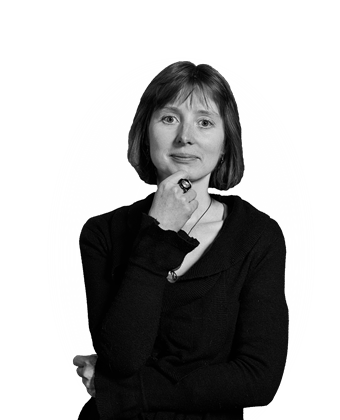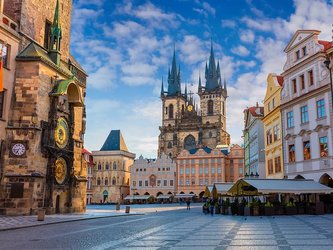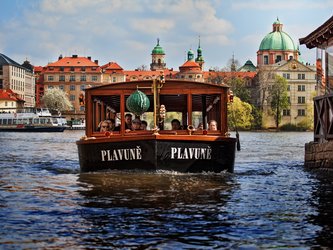The name of one of the most famous authors writing in German and a leading figure of 20th century world literature is inextricably linked with Prague. Franz Kafka was born in the city, which to him was both a cage and a refuge, and it influenced many of his works. For a strong emotional experience connected with this author, visit the museum devoted to him, housed in the former Herget brickworks on the banks of the River Vltava, in the district of Malá Strana
The sombre, poetic audio-visual installation assumes that visitors have a degree of familiarity with Kafka’s work or have at least read some of his writing. The exhibition focuses primarily on his life and personality, so you shouldn’t expect detailed analyses of his books.
The exhibition starts by focusing on Kafka’s Jewish origins, and features old photographs of the Prague Jewish Quarter. As elsewhere in the museum, you’ll find excerpts from Kafka’s letters. The projection room features the sounds of Smetana’s musical work Vltava and looks at Kafka’s childhood, when the family lived in the U Minuty house, by the Astronomical Clock, in Old Town Square. Everywhere, you’ll see plenty of photographs, and extracts from letters and, for example, the certificate proving success in his university law exams. The strong tensions between his life as a clerk and his artist’s personality precipitated inner turmoil in Kafka, as can be observed in his simple drawings, which in the exhibition have been turned into animation. There is also an interesting installation dedicated to Kafka’s encounter with a Yiddish theatre troupe, and his relationships with four women, mostly conducted through letters. The first-floor exhibition concludes with a look at the period when Kafka couldn’t talk, eat or drink, because of tuberculosis of the throat. In addition, this section covers the writer’s death.
The stairs to the lower floor are lit by red lighting, making you feel as if they will never end. Downstairs, you’ll find yourself trapped in an oppressive world of bureaucracy. The maze of large drawers, labelled with names, refers to Kafka’s novels America and The Trial. It’s followed by a moving audio-visual installation inspired by the unfinished novel The Castle. The entire exhibition features quotes from his books, letters and diaries. They draw us even more into the atmosphere of Kafka’s works and the author’s life and thoughts.









